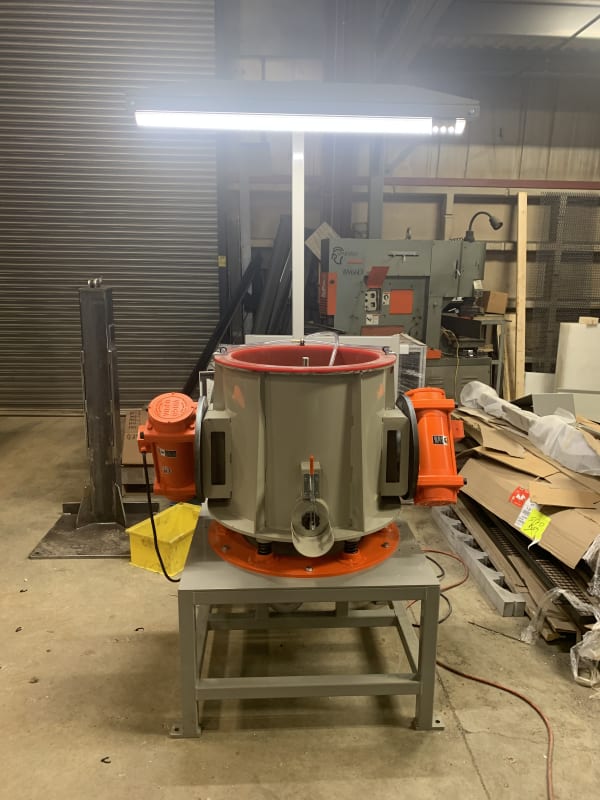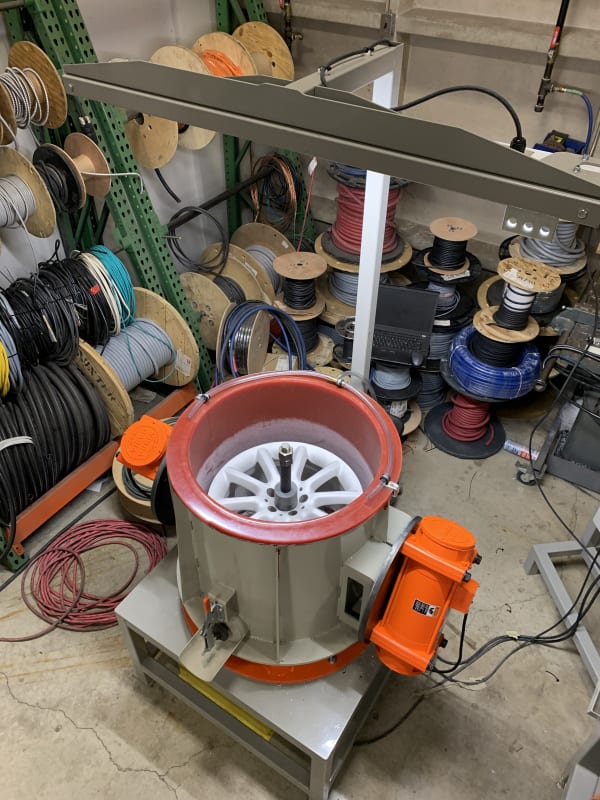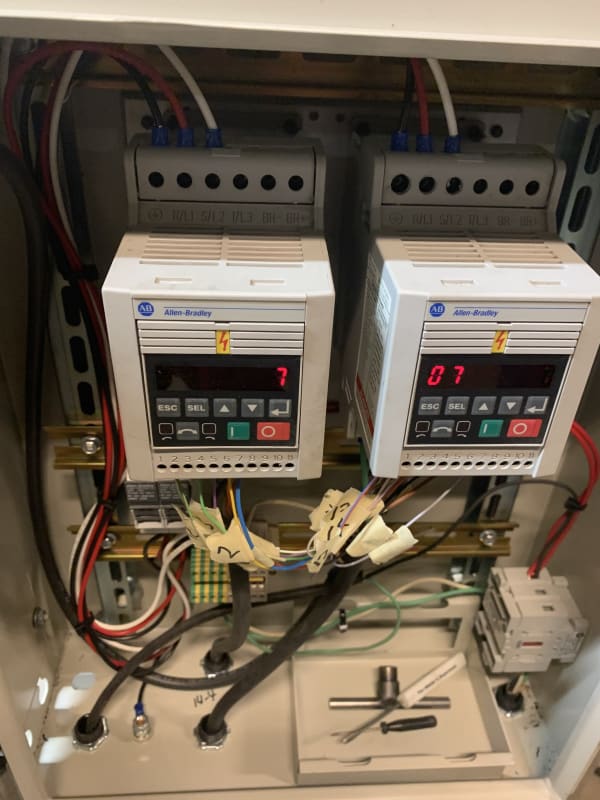I've designed and built a ceramic polishing machine that uses two large motors with built in eccentrics. Initially I had two VFD's controlling each motor both with a potentiometer to fine tune the frequency so they run in phase, however I've been advised by someone who works in this industry that one single VFD is the way to go. With this machine if the eccentrics are running against each other then the media isn't moving for that duration of destructive interference. Is it realistic to think that both motors will run in perfect phase ( for the most part) or lock up in phase by running off one VFD? I'm not an electrical guy and buying a 10 HP VFD is an expensive experiment. Let me know if anyone has any experience syncing two motors.






